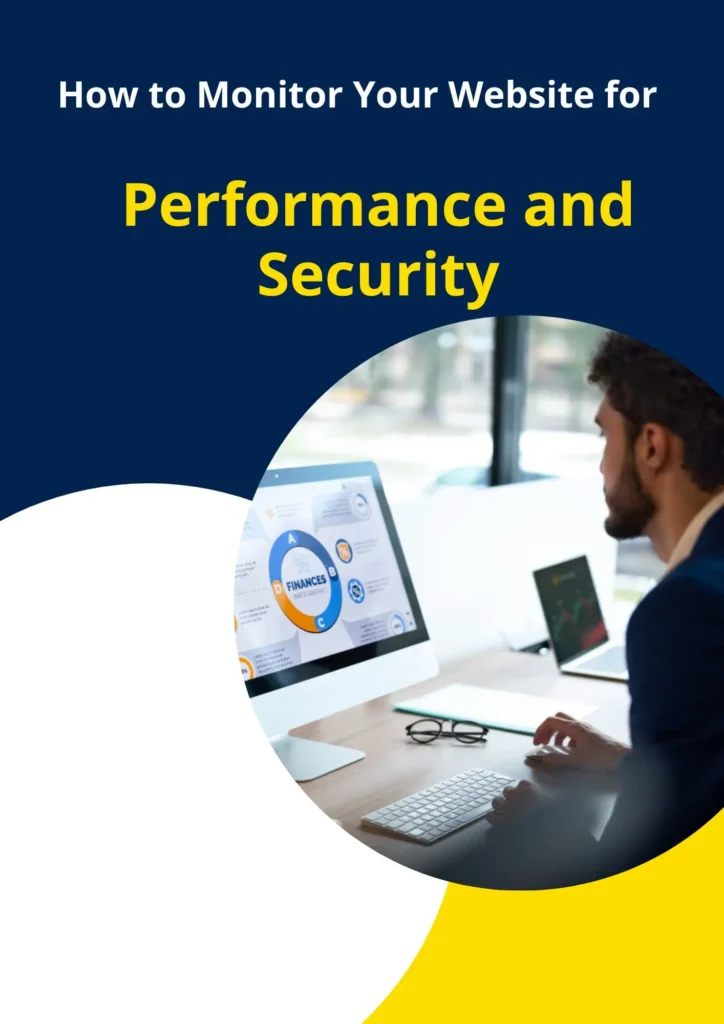Introduction
In today’s fast-paced digital landscape, ensuring the optimal performance and security of your website is more critical than ever. Monitoring websites has evolved from a best practice to an absolute necessity, not only for maintaining a seamless user experience but also for safeguarding against critical vulnerabilities and cyber threats. In this comprehensive guide, we will delve into the essential tools, techniques, and key features that empower you to achieve constant uptime monitoring, government-grade security checks, and frictionless experiences for your users.
The Significance of Website Monitoring
The internet is a bustling marketplace where millions of websites vie for attention. In this highly competitive landscape, user experience is everything. Websites that perform sluggishly or suffer frequent downtime quickly lose visitors and potential customers. Additionally, the threat of cyberattacks and data breaches looms large, making security monitoring equally crucial.
Website monitoring is the proactive stance against these challenges. By regularly assessing the performance and security of your website, you gain insights into its health and can take preventive measures before issues escalate.
Website monitoring goes beyond mere usability and touches on critical aspects that define your online presence:
Usability Issues and Customer Experience:
Usability issues can deter users and negatively impact the customer experience. Website monitoring tools assess user interfaces, ensuring that your site provides seamless and frictionless experiences.
Security Vulnerabilities:
The importance of website monitoring extends to security teams and the security community. Regular security assessments, including government-grade security checks, are crucial for identifying and addressing critical vulnerabilities before they can be exploited. Your site’s reputation and user trust depend on robust security measures.
Performance Monitoring

Effective performance monitoring is foundational to delivering a stellar user experience:
Full-Time Security Admin:
Employing a full-time Security Admin is essential for maintaining robust security measures. This dedicated role ensures continuous vigilance against cyber security weaknesses, performing security assessments and taking proactive measures.
Constant Uptime Monitoring:
Achieving constant uptime monitoring is facilitated by synthetic monitoring systems and domain monitoring tools. These tools not only assess your website’s uptime but also monitor critical components like FTP servers and domain expiry dates.
Latency Tests and Customizable Thresholds:
Monitoring tools offer latency tests and customizable thresholds to detect latency issues before they impact the end-user experience. Customizable performance thresholds allow you to set specific criteria for acceptable performance, ensuring that deviations trigger alerts.
Real-Time Notifications, Detailed Interface, and Key Insights:
Real-time notifications provide instant alerts, enabling you to respond promptly to performance issues. Monitoring tools offer a detailed interface that provides key insights into performance metrics, load error rates, and technical issues, allowing you to make informed decisions and optimizations.
Security Monitoring
In an era of frequent cyber threats, security monitoring is paramount. Websites can fall victim to various attacks, including malware injections, DDoS attacks, and data breaches. Without adequate security measures, your website and user data are at risk.
The development of secured websites is an essential component of effective security monitoring. Building a strong security foundation starts during the development phase, where security considerations are woven into the very fabric of your website’s architecture. This involves employing secure coding practices, regularly updating software components, and conducting thorough security assessments during development.

Secured websites are less vulnerable to attacks, making the job of security monitoring more manageable and effective. When your website is built with security in mind, it acts as a robust fortress against cyber threats. This proactive approach not only safeguards your digital assets but also enhances user trust and confidence in your online presence.
Protecting your website and user data requires a multifaceted security approach:
Additional Features:
Security monitoring encompasses a range of advanced features, including advanced monitors, Core Web Vitals assessments, and basic monitors. These features help identify cyber security weaknesses and areas of improvement, ensuring your site remains secure against evolving threats.
Infrastructure Monitoring:
Infrastructure monitoring is comprehensive, covering multiple geographic locations to detect negative impacts on performance. By assessing server locations, actual users’ experiences, and real browser tests, you gain a holistic view of your website’s performance and security posture.
Instant Alerts:
Instant alerts are a lifeline for security and performance issues. They empower you to take immediate action, mitigating potential damage and minimizing disruptions for your users.
Application Performance Monitoring (APM) and Real User Monitoring (RUM):
APM and RUM provide in-depth insights into response times, application performance, and the end-user experience. These tools help you pinpoint bottlenecks and areas of improvement in real-time.
Synthetic Monitoring
Synthetic monitoring is a proactive technique that emulates real user interactions with your website. It involves the use of monitoring locations distributed worldwide to simulate actual users’ experiences. By conducting synthetic monitoring, you can proactively detect and address performance and security issues before they impact your users, ensuring a seamless and secure browsing experience.
Conclusion
Monitoring websites for performance and security is no longer optional; it’s a fundamental practice for delivering a seamless user experience while safeguarding your digital assets. This encompasses usability assessments, constant uptime monitoring, government-grade security checks, and the ability to identify and mitigate critical vulnerabilities. By harnessing advanced monitoring tools, techniques, and key features, you empower your website to operate optimally, providing users with frictionless experiences while staying resilient against ever-evolving cyber threats. Embrace the power of website monitoring, and you’ll not only thrive in the digital landscape but also build trust and loyalty among your users. Your website’s success hinges on your commitment to continuous monitoring and enhancement.
By entrusting your website to the care of professionals well-versed in monitoring techniques and strategies, you ensure that every facet of your site’s performance and security is meticulously examined. These experts not only conduct usability assessments and constant uptime monitoring but also engage in government-grade security checks with the precision of a cybersecurity team.
Moreover, professional website monitoring goes beyond automated scans; it involves a dedicated Security Admin and a vigilant security community that collaboratively assesses and addresses cybersecurity weaknesses. This level of attention ensures that your site’s defenses are always one step ahead of potential threats.







